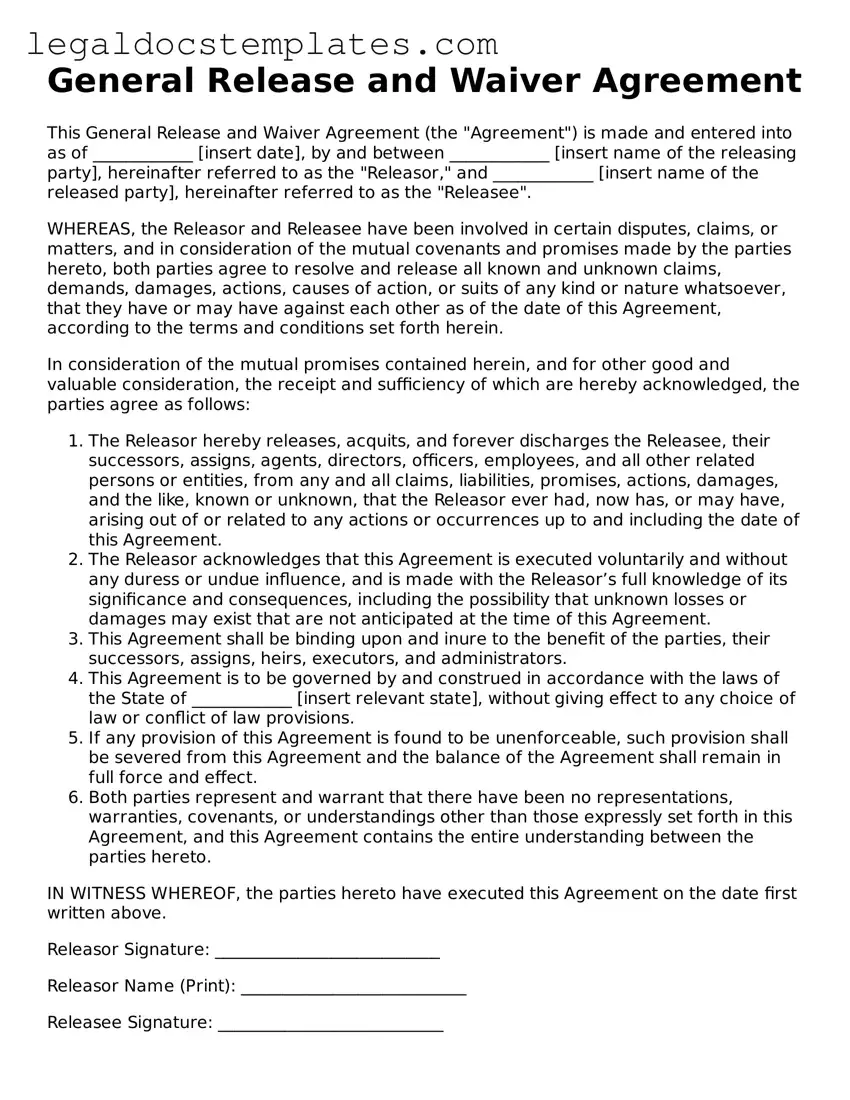The Liability Waiver Form is akin to the General Release and Waiver form, as both are designed to protect an entity or individual from legal claims related to an activity or incident. The Liability Waiver is specifically used to inform participants of the risks involved in an activity and to relinquish the right to sue if injury occurs. This document is essential for activities considered high risk.
Similar to the General Release and Waiver, the Non-Disclosure Agreement (NDA) is used to protect sensitive information. While the NDA is focused on the confidentiality of information, requiring parties not to disclose protected information, the General Release and Waiver targets liability and claims. Both forms are preventative measures to safeguard against potential legal actions.
The Settlement Agreement shares similarities with the General Release and Waiver form in that both are employed to resolve disputes and prevent further legal action. A Settlement Agreement comes into play after a disagreement has arisen, detailing the terms under which parties agree to resolve their issue, often including a clause that releases parties from future claims.
The Hold Harmless Agreement parallels the General Release and Waiver by aiming to protect one party from legal claims brought by another. This form is typically used in scenarios where one party might be exposed to liability due to the actions, or inactions, of another party. It's a preemptive measure to minimize legal exposure.
A Medical Release Form, while contextually specific, shares a foundation with the General Release and Waiver in its purpose to release parties from liability. Particularly used in healthcare, it allows the sharing of an individual's medical information under agreed circumstances and releases medical staff from liability under certain conditions.
The Indemnity Agreement, akin to the General Release and Waiver, is intended to protect against losses and damages. This document specifically requires one party to compensate the other for any harm or loss arising from a particular event. It's another legal tool used to manage and transfer risk.
The Property Damage Release, similar to the General Release and Waiver, is used when settling claims related to property damage. This form specifically addresses the resolution and dismissal of claims regarding property losses, ensuring that no further legal action is pursued following the incident.
Employment Severance Agreements, like the General Release and Waiver, involve a release of claims but are specific to employment scenarios. These agreements typically outline compensation provided to the employee in exchange for a waiver of rights to sue the employer, often used in layoffs or terminations.
The Photo Release Form shares with the General Release and Waiver the intention of relinquishing rights or claims. In this case, it grants permission to use an individual’s image or likeness in media or publications, ensuring the subject cannot claim damages or infringe on copyright relating to the use of their image.
Last but not least, the Confidentiality Agreement, while primarily aimed at protecting information, parallels the preventative nature of the General Release and Waiver. It legally binds parties to keep specified information confidential, aiming to prevent the fallout—such as litigation—that might emerge from a breach of said confidentiality.
